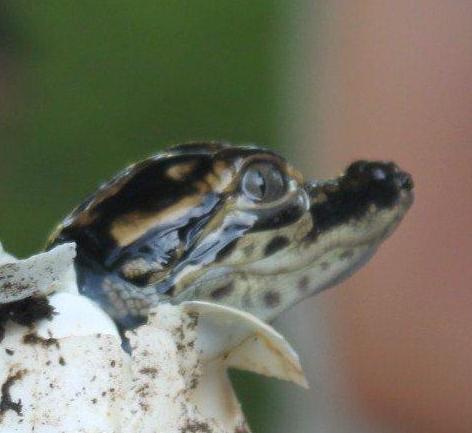|
Description - Size 2-4 inches (5.1 - 10.0 cm). The key identification mark is a dark
lateral stripe on the sides of the toad. This dark prominent stripe is bordered by a lighter strip
above (dorsal). There is also a light stripe extending down the center of the back. Coloration on
the toads back ranges black with orange to yellow with whitish spots. There are bumpy raised ridges on the
toad’s head with a deep grove down the center of the head. The paratoid gland (a wart like structure)
behind the eye is shaped like a triangle. The male is much smaller then the female. The male has a yellow -
green throat and the female has a white throat.
Voice - The male sings fluttering musical notes that sounds like a wooden rattle.
The call lasts from 3 - 6 seconds and repeats every 1 - 4 seconds. They can be heard singing from
March - September, mostly after heavy rains.
Habitat - Gulf Coast Toads can often be found living in cities and towns around man made
places such as roadside ditches, landscaping, storm sewers and meter boxes. They will often gather
under street lights to feed on insects.
Breeding - Gulf Coast Toads breed from March - September mostly after heavy rains.
Eggs are laid in long strings wrapped around vegetation in ponds and temporary bodies of water.
Range in Texas - Gulf Coast Toads can be found from South Texas to central Texas
into most of east Texas.
Notes - The paratoid gland on the side of the toads head can secrete a powerful toxin
to ward of attackers. The toad will also inflate it’s body to appear larger to an attacker. This
is the most common toad found in residential areas.
|




